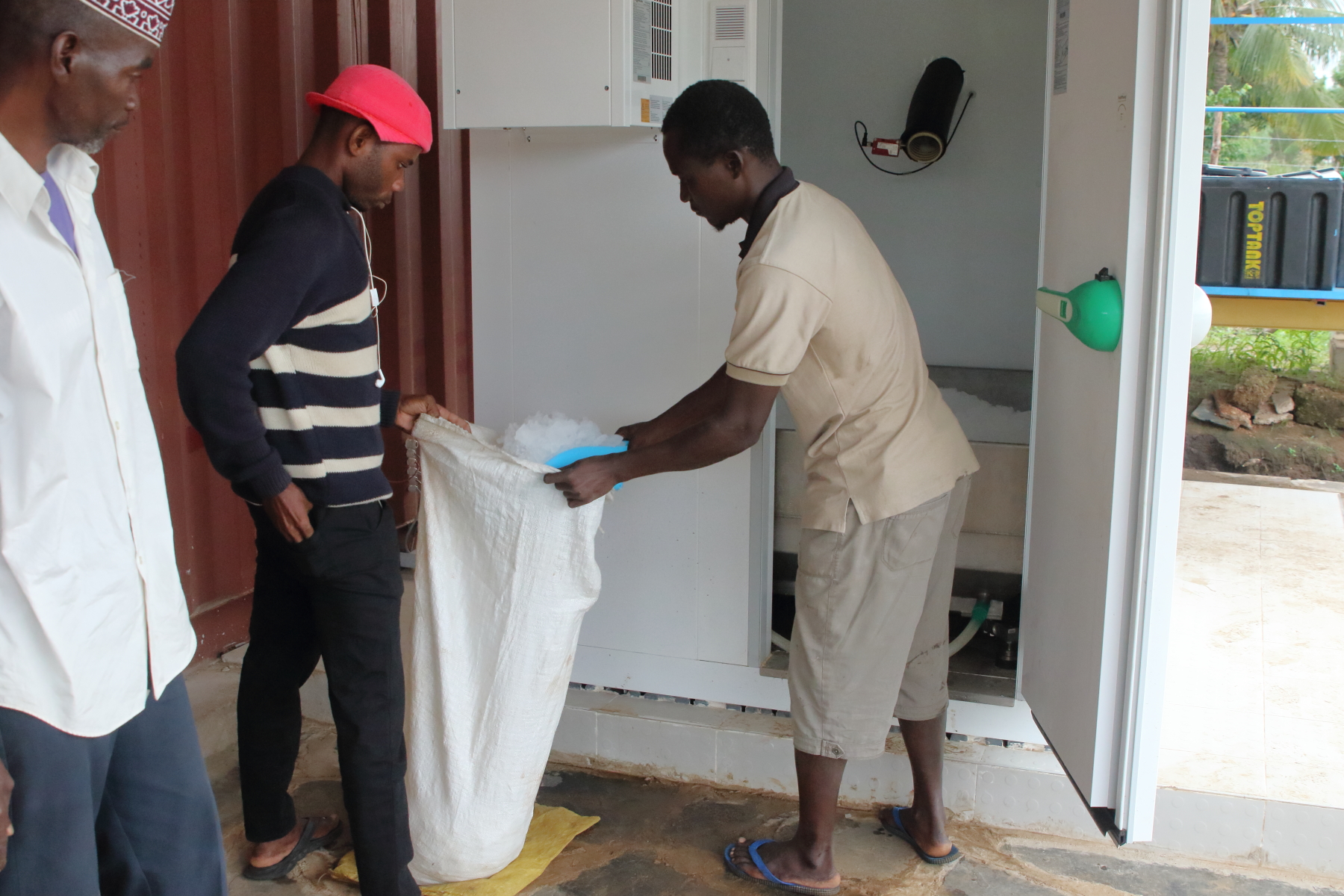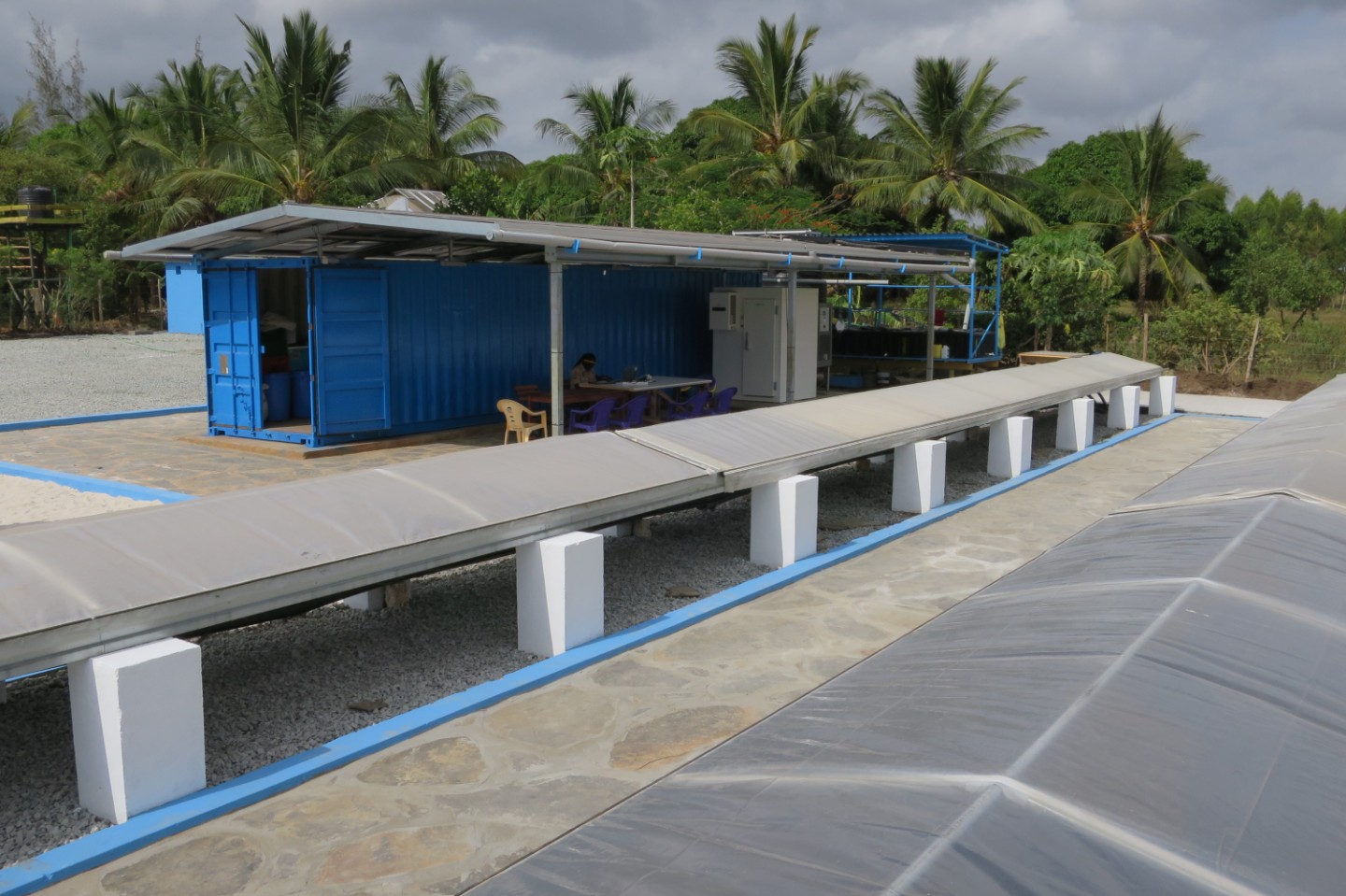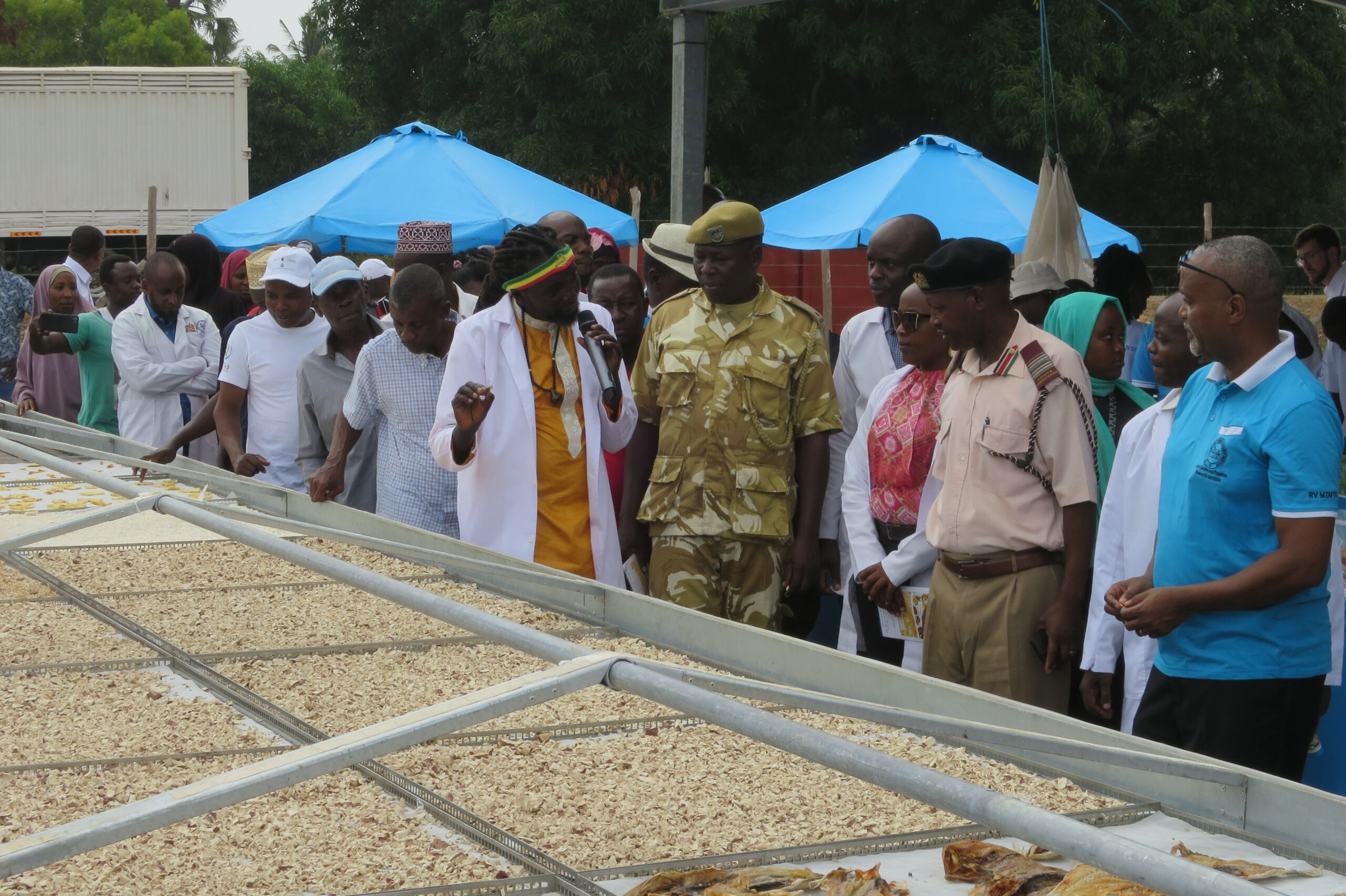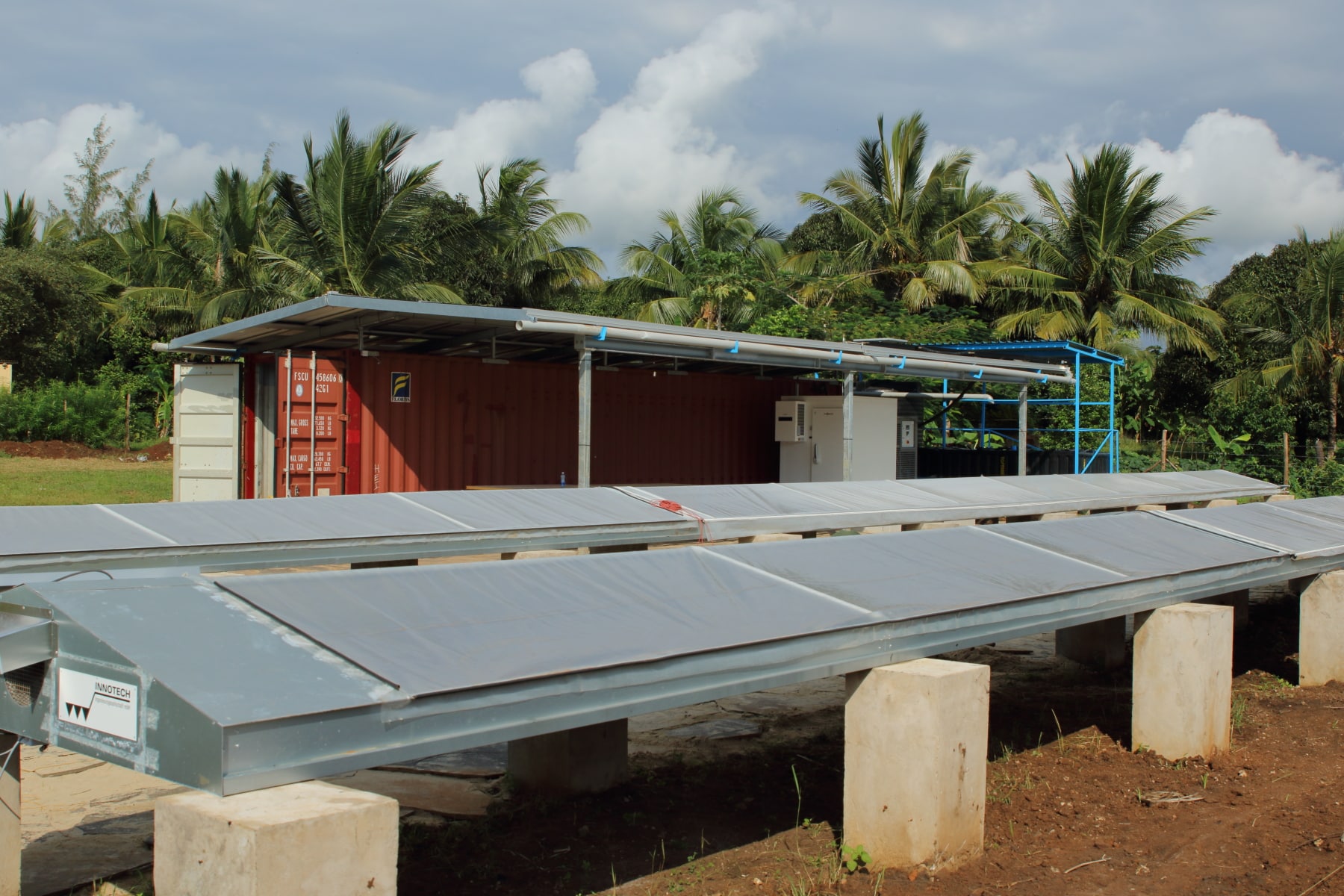The lack of electricity in rural areas makes it difficult for fishermen and farmers in Africa to preserve or refrigerate their products. This reduces their income and threatens food security. As a result, up to 30 percent of food spoils on its way to the market. In the SolCoolDry project, funded by the German Federal Agency for Agriculture and Food (BLE), the Fraunhofer Institute for Solar Energy Systems ISE, together with the company Innotech Ingenieursgesellschaft mbH and Kenyan partners, has developed a system that uses solar thermal and photovoltaic energy to generate drying heat and produce ice. The plant has now been handed over to the local partners in Mwazaro in southern Kenya. The system developed to dry agricultural and marine products and produce ice for cooling fish was developed in close cooperation with the German company Innotech Ingenieursgesellschaft mbH and local Kenyan partners. In addition to the Kenya Industrial Research and Development Institute KIRDI, the Kenya Marine and Fisheries Research Institute KMFRI and the Technical University of Mombasa as research partners, the Beach Management Unit, an association of local fishermen, mangrove planters, farmers, beekeepers and kelp farmers, was also involved in the project. The first part of the SolCoolDry system consists of a 15 kWp photovoltaic system that feeds electricity into a three-phase, battery-supported stand-alone grid, which is used to power the ice machine and cold room. A maximum of 1500 kilograms of ice can be produced within 24 hours. Excess solar power is fed into batteries with a total storage capacity of 19.2 kilowatt-hours. Secondly, the SolCoolDry system also has two solar tunnel dryers in which air is heated and distributed by fans over the dry goods throughout the day. To enable continuous drying throughout the night, one of the tunnel dryers contains heating pipes. These are supplied with heat from a 12 square meter flatplate collector and a 2000-liter hot water storage tank

Fishermen are getting ice for cooling their catch. ©Fraunhofer ISE

The SolCoolDry system consists of two tunnel dryers and a photovoltaic system as well as the ice machine. ©Fraunhofer ISE
Sustainable Operation under Own Responsibility
In a workshop on February 7 in Mombasa, the project partners from Kenya and Germany presented the project to representatives of the local communities, politicians, installers and the press. The following day, the facility was officially opened and handed over to the Beach Management Unit in the presence of the Deputy County Commissioner Josep Sawe, the management of the neighboring Beach Management Units and other official representatives and organizations, such as the Kenya Wildlife Service. A technician, who is currently being trained, will ensure sustainable operation. In further training courses, the fishermen will be trained in quality assurance and hygienic processing of their products. “Fraunhofer ISE will continue to monitor the plant in the future. The acquired data will be recorded in a monitoring system so that remote diagnosis is possible,” explains project manager Dr. Alexander Morgenstern from Fraunhofer ISE.
The first trial operation showed just how great the interest in the functioning plant is. “The SolCoolDry plant is very well received by the population and the demand for ice is even greater than originally anticipated. Some fishermen drive 50 kilometers to pick up the ice,” reports Dr. Alexander Morgenstern. Like the ice machine, the drying plant also operates continuously and is used to dry meat, fish, fruits, vegetables and flowers for making tea.

Inauguration of the drying plant for vegetables, fruits and fish. ©Fraunhofer ISE
Details

Date: 2023
Location: Kenya
Project Partners: Fraunhofer ISE (Germany), KIRDI (Kenya)
- Collaborative Project
- WAITRO Facilitated Project
